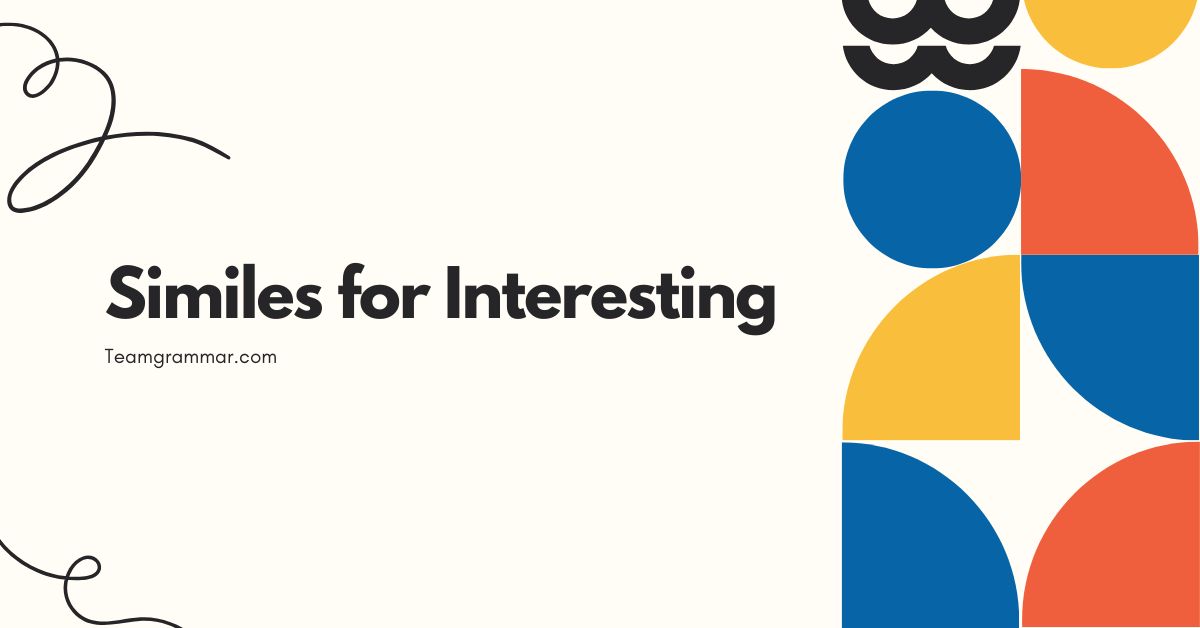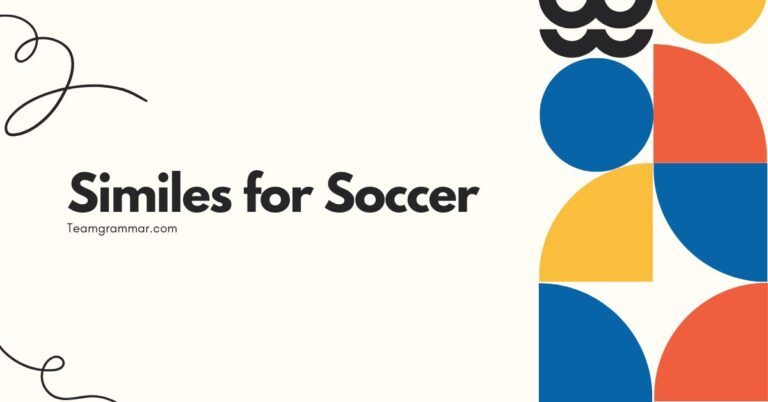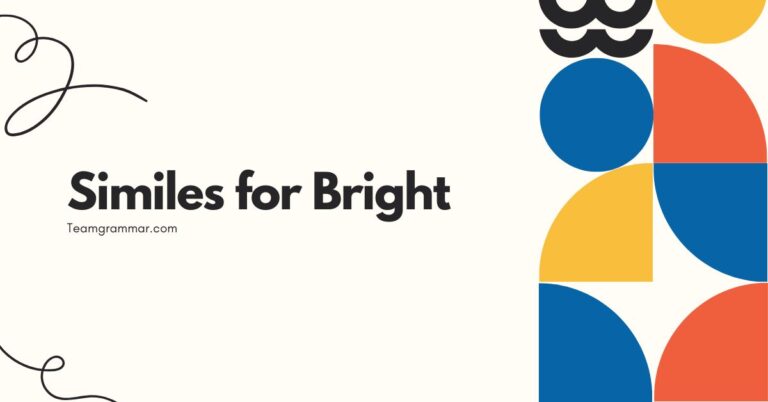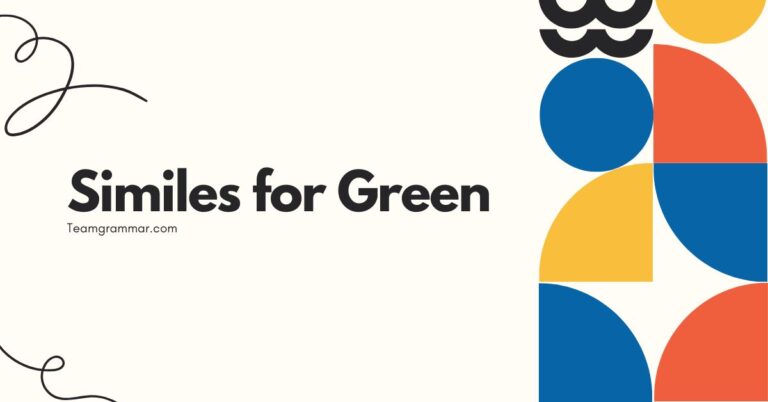35 Similes for “Interesting”: Enhancing Descriptive Language
The word “interesting” is a common adjective, but overuse can render descriptions bland. Mastering similes offers a potent tool to inject vibrancy and specificity into your writing and conversation.
This article delves into the art of crafting similes to replace “interesting,” providing a comprehensive guide for enriching your descriptive language. Whether you’re a student, writer, or language enthusiast, this guide will equip you with the knowledge and practice needed to elevate your communication skills.
By exploring diverse simile structures and categories, you will learn how to create vivid comparisons that capture attention and convey nuanced meaning. Through numerous examples and practical exercises, this article will transform your understanding of similes and empower you to use them effectively, making your language more engaging and memorable.
Let’s embark on this journey to discover the power of similes in making the ordinary extraordinary.
Table of Contents
- Definition of Simile
- Structural Breakdown of Similes
- Types of Similes
- Examples of Similes for “Interesting”
- Usage Rules for Similes
- Common Mistakes with Similes
- Practice Exercises
- Advanced Topics in Similes
- Frequently Asked Questions (FAQ)
- Conclusion
Definition of Simile
Asimileis a figure of speech that directly compares two different things using the words “like” or “as.” The purpose of a simile is to create a vivid image or convey a deeper understanding of the subject by associating it with something familiar or easily understood. Similes add color, depth, and nuance to writing, making it more engaging and memorable.
They are a fundamental tool in descriptive language and are used extensively in literature, poetry, and everyday conversation.
Similes belong to the broader category offigurative language, which includes metaphors, personification, and hyperbole. Unlike metaphors, which state that one thing *is* another, similes explicitly acknowledge the comparison using “like” or “as.” This direct comparison allows for a more nuanced and often less assertive way of drawing parallels between two distinct entities.
The effectiveness of a simile depends on the strength and clarity of the comparison, as well as its relevance to the context in which it is used.
The function of a simile extends beyond mere description. It can be used to evoke emotions, create humor, or provide a fresh perspective on a familiar subject.
By drawing unexpected connections, similes can challenge readers or listeners to think differently and appreciate the subtleties of language. In essence, a well-crafted simile is a powerful tool for enhancing communication and enriching the human experience.
Structural Breakdown of Similes
The basic structure of a simile consists of three key elements: the subject, the connecting word (“like” or “as”), and the object of comparison. Understanding how these elements interact is crucial for crafting effective and meaningful similes.
Let’s break down each component in detail:
- Subject: This is the thing being described or compared. It’s the focus of the simile and the entity that the comparison aims to illuminate.
- Connecting Word: This is either “like” or “as,” which explicitly indicates that a comparison is being made. These words serve as the bridge between the subject and the object of comparison.
- Object of Comparison: This is the thing to which the subject is being compared. It should possess a quality or characteristic that is shared with the subject, making the comparison relevant and insightful.
For example, in the simile “The book was as captivating as a thrilling adventure,” the subject is “the book,” the connecting word is “as,” and the object of comparison is “a thrilling adventure.” The simile suggests that the book shares the quality of being captivating with a thrilling adventure, thereby enhancing the reader’s understanding of the book’s appeal.
Variations in simile structure can involve modifying the subject, object, or both with adjectives or adverbs to add further detail and nuance. For instance, “The lecture was as dry as the Sahara Desert” adds the adjective “dry” to further emphasize the characteristic being compared.
Similarly, adverbs can be used to modify the connecting word, such as “The story unfolded much like a dream,” where “much” intensifies the comparison.
The effectiveness of a simile also depends on the clarity and relevance of the comparison. A strong simile should create a clear and understandable connection between the subject and the object, making the comparison meaningful and insightful.
Avoid using comparisons that are too obscure or irrelevant, as they can confuse the reader and weaken the impact of the simile.
Types of Similes
Similes can be categorized based on their structure and complexity. Understanding these different types can help you create more versatile and effective comparisons in your writing.
Direct Similes
Direct similes are the most common and straightforward type of simile. They explicitly state the comparison using “like” or “as,” leaving no room for ambiguity.
These similes are easy to identify and understand, making them a popular choice for both writers and speakers.
For example: “The idea was as fascinating as a hidden treasure.” This simile directly compares the idea to a hidden treasure, highlighting its captivating and intriguing nature.
Implied Similes
Implied similes, also known as indirect similes, suggest a comparison without explicitly stating it. These similes often use verbs or descriptive phrases to hint at the similarity between two things, requiring the reader to infer the comparison.
For example: “The speaker’s words sparkled with wit, much like a diamond’s facets catching the light.” Here, the simile implies a comparison between the speaker’s words and a diamond, suggesting that both are brilliant and engaging.
Extended Similes
Extended similes are similes that are developed over several lines or sentences. They elaborate on the comparison, providing more detail and nuance.
These similes are often used to create a more vivid and memorable image in the reader’s mind.
For example: “The topic was as captivating as a complex mystery novel, drawing me in with its intricate plot twists and unexpected revelations, keeping me on the edge of my seat until the very end, and leaving me wanting more even after the final page was turned.” This extended simile provides a detailed comparison between the topic and a mystery novel, emphasizing its captivating and engaging qualities.
Examples of Similes for “Interesting”
Instead of simply stating something is “interesting,” use similes to convey the specific nuance of what makes it so. The following sections provide examples of similes categorized by the specific type of “interesting” they aim to convey.
Similes Suggesting Intrigue
These similes convey a sense of mystery and curiosity, suggesting that the subject is captivating due to its enigmatic nature.
The following table provides examples of similes that can be used in place of the word “interesting” when you mean to convey that something is intriguing. Each simile offers a unique way to describe the subject, adding depth and color to your descriptions.
Use these examples as inspiration to craft your own similes that capture the essence of intrigue.
| Simile | Explanation |
|---|---|
| As intriguing as a secret whispered in the dark. | Suggests a hidden, mysterious quality. |
| As intriguing as an unsolved riddle. | Implies a puzzle that captivates attention. |
| As intriguing as a map to a lost treasure. | Evokes a sense of adventure and discovery. |
| As intriguing as a forbidden book. | Suggests something alluring and slightly dangerous. |
| As intriguing as a coded message. | Implies that something is fascinating but requires deciphering. |
| As intriguing as a half-remembered dream. | Suggests a subtle, elusive quality. |
| As intriguing as a ghost story told around a campfire. | Evokes a sense of mystery and suspense. |
| As intriguing as a hidden passage in an old house. | Suggests something unexpected and mysterious. |
| As intriguing as a piece of ancient history. | Implies a connection to something old, mysterious and profound. |
| As intriguing as the plot of a mystery novel. | Suggests a complex, captivating narrative. |
| As intriguing as a magician’s illusion. | Evokes a sense of wonder and deception. |
| As intriguing as a work of abstract art. | Implies a need for interpretation and understanding. |
| As intriguing as a puzzle with missing pieces. | Suggests an incomplete picture that begs to be solved. |
| As intriguing as a whispered rumor. | Implies something is fascinating because of its secrecy. |
| As intriguing as the unknown depths of the ocean. | Evokes a sense of vastness and unexplored mysteries. |
| As intriguing as a cryptic crossword clue. | Suggests a challenge that is enjoyable to solve. |
| As intriguing as an old photograph. | Implies a connection to the past and hidden stories. |
| As intriguing as the possibility of alien life. | Evokes a sense of wonder and speculation. |
| As intriguing as a secret language. | Suggests exclusivity and hidden knowledge. |
| As intriguing as a complex scientific theory. | Implies a challenge to understand and explore. |
| As intriguing as a political conspiracy. | Evokes a sense of mystery and hidden motives. |
| As intriguing as a historical enigma. | Suggests a mystery from the past that remains unsolved. |
| As intriguing as a spy novel. | Implies a world of secrets, deception, and suspense. |
| As intriguing as a dream journal entry. | Evokes the surreal and mysterious nature of dreams. |
| As intriguing as a fortune teller’s prediction. | Suggests a glimpse into the unknown future. |
| As intriguing as an unsolved crime. | Implies a mystery that needs to be solved. |
| As intriguing as a hidden garden. | Evokes a sense of discovery and beauty. |
| As intriguing as an ancient artifact. | Suggests a connection to the past and hidden stories. |
Similes Suggesting Captivation
These similes describe something that holds your attention completely, like being under a spell.
The following table provides examples of similes that can be used in place of the word “interesting” when you mean to convey that something is captivating. Each simile offers a unique way to describe the subject, adding depth and color to your descriptions.
Use these examples as inspiration to craft your own similes that capture the essence of captivation.
| Simile | Explanation |
|---|---|
| As captivating as a siren’s song. | Suggests an irresistible allure. |
| As captivating as a mesmerizing dance. | Implies a graceful and enchanting quality. |
| As captivating as a beautiful sunset. | Evokes a sense of awe and wonder. |
| As captivating as a child’s laughter. | Suggests a pure and joyful quality. |
| As captivating as a thrilling performance. | Implies excitement and engagement. |
| As captivating as a heart-stopping adventure. | Evokes feelings of excitement and suspense. |
| As captivating as a blooming flower in spring. | Suggests beauty, renewal, and a sense of wonder. |
| As captivating as a starlit night sky. | Implies vastness, mystery, and a sense of peace. |
| As captivating as a roaring waterfall. | Evokes power, beauty, and a sense of awe. |
| As captivating as a perfectly told story. | Suggests engagement, emotion, and a lasting impact. |
| As captivating as a breathtaking landscape. | Implies beauty, grandeur, and a sense of wonder. |
| As captivating as a well-composed piece of music. | Evokes emotion, harmony, and a sense of artistry. |
| As captivating as a powerful oration. | Suggests persuasion, emotion, and a lasting impact. |
| As captivating as a graceful ballet performance. | Implies beauty, skill, and a sense of artistry. |
| As captivating as a thought-provoking film. | Evokes emotion, reflection, and a lasting impact. |
| As captivating as a masterfully crafted painting. | Suggests beauty, skill, and a sense of artistry. |
| As captivating as a warm summer breeze. | Implies comfort, tranquility, and a sense of peace. |
| As captivating as a crackling fireplace on a cold night. | Evokes warmth, comfort, and a sense of security. |
| As captivating as a vibrant coral reef. | Suggests beauty, diversity, and a sense of wonder. |
| As captivating as a rare and precious gem. | Implies beauty, value, and a sense of rarity. |
| As captivating as a heart-warming reunion. | Evokes emotion, connection, and a sense of joy. |
| As captivating as a thrilling rollercoaster ride. | Suggests excitement, adrenaline, and a sense of adventure. |
| As captivating as a perfectly timed joke. | Implies humor, wit, and a sense of amusement. |
| As captivating as a brilliant scientific discovery. | Evokes awe, wonder, and a sense of progress. |
| As captivating as a moving act of kindness. | Suggests compassion, empathy, and a sense of warmth. |
| As captivating as a soul-stirring melody. | Implies emotion, beauty, and a lasting impact. |
| As captivating as a mesmerizing magic trick. | Evokes wonder, surprise, and a sense of disbelief. |
Similes Suggesting Fascination
These similes indicate that something is compelling and holds your attention due to its complexity or uniqueness.
The following table provides examples of similes that can be used in place of the word “interesting” when you mean to convey that something is fascinating. Each simile offers a unique way to describe the subject, adding depth and color to your descriptions.
Use these examples as inspiration to craft your own similes that capture the essence of fascination.
| Simile | Explanation |
|---|---|
| As fascinating as the inner workings of a clock. | Suggests intricate complexity. |
| As fascinating as the life cycle of a butterfly. | Implies transformation and wonder. |
| As fascinating as the rings of Saturn. | Evokes a sense of cosmic wonder. |
| As fascinating as the art of origami. | Suggests skill, precision, and beauty. |
| As fascinating as the migratory patterns of birds. | Implies complexity and natural wonder. |
| As fascinating as the evolution of language. | Evokes a sense of history and continuous change. |
| As fascinating as the exploration of the deep sea. | Suggests mystery, discovery, and the unknown. |
| As fascinating as the study of the human brain. | Implies complexity, mystery, and endless exploration. |
| As fascinating as the creation of a masterpiece. | Evokes skill, artistry, and a sense of wonder. |
| As fascinating as the discovery of a new species. | Suggests excitement, wonder, and the vastness of nature. |
| As fascinating as the workings of a beehive. | Implies intricate organization, cooperation, and purpose. |
| As fascinating as the processes of the universe. | Evokes awe, wonder, and a sense of the infinite. |
| As fascinating as the history of ancient civilizations. | Suggests mystery, discovery, and the passage of time. |
| As fascinating as the construction of the pyramids. | Implies skill, ingenuity, and the power of human effort. |
| As fascinating as the science of genetics. | Evokes complexity, wonder, and the building blocks of life. |
| As fascinating as the principles of quantum physics. | Suggests mystery, complexity, and the limits of understanding. |
| As fascinating as the study of meteorology. | Implies wonder, complexity, and the forces of nature. |
| As fascinating as the art of illusion. | Evokes wonder, surprise, and the manipulation of perception. |
| As fascinating as the development of technology. | Suggests progress, innovation, and the transformation of society. |
| As fascinating as the exploration of space. | Implies wonder, discovery, and the vastness of the universe. |
Similes Suggesting Engrossment
These similes convey that something is so captivating that it completely absorbs your attention.
The following table provides examples of similes that can be used in place of the word “interesting” when you mean to convey that something is engrossing. Each simile offers a unique way to describe the subject, adding depth and color to your descriptions.
Use these examples as inspiration to craft your own similes that capture the essence of engrossment.
| Simile | Explanation |
|---|---|
| As engrossing as being lost in a good book. | Suggests complete immersion. |
| As engrossing as watching a suspenseful movie. | Implies being completely absorbed. |
| As engrossing as solving a complex puzzle. | Evokes a sense of focused attention. |
| As engrossing as a child playing with their favorite toy. | Suggests undivided attention and joy. |
| As engrossing as a scientist conducting an experiment. | Implies intense focus and dedication. |
| As engrossing as a musician lost in their performance. | Evokes a sense of passion and complete absorption. |
| As engrossing as an artist creating a masterpiece. | Suggests dedication, focus, and artistic immersion. |
| As engrossing as a chef preparing a gourmet meal. | Implies precision, focus, and culinary dedication. |
| As engrossing as a programmer writing code. | Evokes concentration, logic, and problem-solving. |
| As engrossing as a dancer performing on stage. | Suggests passion, skill, and complete bodily expression. |
| As engrossing as a writer crafting a novel. | Implies dedication, imagination, and narrative immersion. |
| As engrossing as a detective solving a case. | Evokes intrigue, focus, and the pursuit of truth. |
| As engrossing as a student studying for an exam. | Suggests focus, dedication, and academic immersion. |
| As engrossing as a gamer playing their favorite video game. | Implies concentration, engagement, and virtual immersion. |
| As engrossing as a traveler exploring a new city. | Evokes curiosity, discovery, and cultural immersion. |
Similes Suggesting Stimulation
These similes imply that something is exciting and energizing, sparking curiosity and thought.
The following table provides examples of similes that can be used in place of the word “interesting” when you mean to convey that something is stimulating. Each simile offers a unique way to describe the subject, adding depth and color to your descriptions.
Use these examples as inspiration to craft your own similes that capture the essence of stimulation.
| Simile | Explanation |
|---|---|
| As stimulating as a shot of espresso. | Suggests a jolt of energy and alertness. |
| As stimulating as a lively debate. | Implies intellectual engagement and excitement. |
| As stimulating as a challenging workout. | Evokes physical energy and invigoration. |
| As stimulating as a brainstorming session. | Suggests creative energy and idea generation. |
| As stimulating as a new adventure. | Implies excitement, discovery, and novelty. |
| As stimulating as a thought-provoking conversation. | Evokes intellectual curiosity and engagement. |
| As stimulating as a vibrant work of art. | Suggests visual excitement and emotional response. |
| As stimulating as a fast-paced action movie. | Implies excitement, adrenaline, and entertainment. |
| As stimulating as a powerful piece of music. | Evokes emotion, energy, and auditory excitement. |
| As stimulating as a creative writing exercise. | Suggests imaginative exploration and mental engagement. |
| As stimulating as a scientific breakthrough. | Implies excitement, innovation, and intellectual advancement. |
| As stimulating as a challenging game of chess. | Evokes strategic thinking and mental agility. |
| As stimulating as a visit to a bustling city. | Suggests sensory overload and exciting experiences. |
| As stimulating as a hike in a scenic mountain range. | Implies physical exertion, natural beauty, and mental invigoration. |
| As stimulating as a solving a complex math problem. | Evokes logical thinking and intellectual satisfaction. |
Usage Rules for Similes
Using similes effectively requires adherence to certain rules to ensure clarity, relevance, and impact. Here are some essential guidelines:
- Clarity: The comparison should be clear and easily understood. Avoid obscure or overly complex comparisons that may confuse the reader.
- Relevance: The object of comparison should share a relevant characteristic with the subject. The connection between the two should be logical and meaningful.
- Originality: Strive for originality in your similes. Avoid clichés and overused comparisons that have lost their impact.
- Context: Ensure that the simile is appropriate for the context in which it is used. Consider the tone, audience, and purpose of your writing.
- Consistency: Maintain consistency in your comparisons. Avoid mixing metaphors or using similes that contradict each other.
Exceptions to these rules may occur in creative writing, where authors may intentionally use unconventional similes to create a specific effect. However, in most cases, it is best to adhere to these guidelines to ensure that your similes are effective and impactful.
Common Mistakes with Similes
Even experienced writers can make mistakes when using similes. Here are some common errors to avoid:
- Using Clichés: Overused similes like “as blind as a bat” or “as strong as an ox” can make your writing seem unoriginal and uninspired.
- Mixing Metaphors and Similes: Confusing metaphors and similes can create illogical and confusing comparisons. Remember that similes use “like” or “as,” while metaphors state that one thing *is* another.
- Creating Illogical Comparisons: The comparison should be logical and meaningful. Avoid comparing things that have little or nothing in common.
- Using Overly Complex Comparisons: Similes should be clear and easy to understand. Avoid using overly complex comparisons that may confuse the reader.
Here are some examples of common mistakes and how to correct them:
| Incorrect | Correct | Explanation |
|---|---|---|
| The idea was as interesting as a rock. | The idea was as interesting as a hidden treasure. | The original comparison is weak and uninspired. The corrected version uses a more compelling comparison. |
| The topic was interesting, a captivating mystery. | The topic was as interesting as a captivating mystery. | The original sentence mixes a simile and a metaphor. The corrected version uses a simile correctly. |
| The lecture was as interesting as a refrigerator. | The lecture was as interesting as a complex scientific theory. | The original comparison is illogical. The corrected version uses a more relevant comparison. |
Practice Exercises
Test your understanding of similes with these practice exercises. Choose the best simile to replace “interesting” in each sentence.
| Question | Answer |
|---|---|
| 1. The movie was _____. | As captivating as a thrilling adventure. |
| 2. The book was _____. | As engrossing as being lost in a good book. |
| 3. The lecture was _____. | As stimulating as a thought-provoking conversation. |
| 4. The idea was _____. | As intriguing as a secret whispered in the dark. |
| 5. The topic was _____. | As fascinating as the inner workings of a clock. |
| 6. The museum exhibit was _____. | As captivating as a mesmerizing dance. |
| 7. The speaker was _____. | As stimulating as a shot of espresso. |
| 8. The story was _____. | As intriguing as an unsolved riddle. |
| 9. The experiment was _____. | As fascinating as the life cycle of a butterfly. |
| 10. The performance was _____. | As engrossing as watching a suspenseful movie. |
Exercise 2: Rewrite the following sentences using similes to replace the word “interesting.”
- The article about ancient civilizations was interesting. (Answer: The article about ancient civilizations was as fascinating as the discovery of a lost city.)
- The new scientific theory was interesting. (Answer: The new scientific theory was as stimulating as a scientific breakthrough.)
- The plot of the movie was interesting. (Answer: The plot of the movie was as intriguing as a coded message.)
- The speaker’s presentation was interesting. (Answer: The speaker’s presentation was as captivating as a siren’s song.)
- The book about the history of art was interesting. (Answer: The book about the history of art was as engrossing as being lost in a good book.)
- The documentary about wildlife was interesting. (Answer: The documentary about wildlife was as fascinating as the migratory patterns of birds.)
- The debate about climate change was interesting. (Answer: The debate about climate change was as stimulating as a lively debate.)
- The mystery novel was interesting. (Answer: The mystery novel was as intriguing as a map to a lost treasure.)
- The lecture about quantum physics was interesting. (Answer: The lecture about quantum physics was as fascinating as the principles of quantum physics.)
- The concert was interesting. (Answer: The concert was as captivating as a thrilling performance.)
Advanced Topics in Similes
For advanced learners, exploring more complex aspects of similes can further enhance their writing skills. This includes:
- Subverting Expectations: Intentionally using unexpected or unconventional comparisons to create surprise or humor.
- Creating Symbolism: Using similes to imbue the subject with symbolic meaning, adding layers of interpretation to the text.
- Developing Voice: Using similes to create a unique and distinctive voice in your writing, reflecting your personal style and perspective.
Experimenting with these advanced techniques can elevate your similes from mere descriptive tools to powerful literary devices that enhance the depth and impact of your writing.
Frequently Asked Questions (FAQ)
- What is the difference between a simile and a metaphor?
A simile is a comparison using “like” or “as,” while a metaphor directly states that one thing *is* another. Similes are explicit comparisons, while metaphors are implicit.
- How can I avoid using clichés in my similes?
Strive for originality by thinking of unique and unexpected comparisons. Brainstorm different possibilities and choose the most creative and relevant option.
- What makes a good simile?
A good simile is clear, relevant, original, and appropriate for the context in which it is used. It should create a vivid image or convey a deeper understanding of the subject.
- Can a simile be too complex?
Yes, a simile can be too complex if it is difficult to understand or if the comparison is too obscure. Aim for clarity and simplicity in your comparisons.
- How can I use similes to create a specific tone in my writing?
Choose similes that evoke the desired emotions or associations. For example, using dark and ominous similes can create a sense of suspense or dread.
- Are there any situations where I should avoid using similes?
In formal or technical writing, similes may be inappropriate if they detract from the clarity and objectivity of the text. Use them sparingly and only when they enhance understanding.
- How can I practice using similes effectively?
Practice writing similes regularly by describing everyday objects or experiences using creative comparisons. Read widely and pay attention to how other writers use similes in their work.
- Can I use similes in spoken language?
Yes, similes can be used effectively in spoken language to add color and emphasis to your descriptions. However, be mindful of your audience and the context in which you are speaking.
- What if I can’t think of a good simile?
Don’t force it. Sometimes, a simple and direct description is more effective than a weak or contrived simile. Focus on conveying your message clearly and accurately.
- How do I know if my simile is effective?
Ask for feedback from others. If your simile resonates with readers and helps them understand your subject more clearly, then it is likely effective.
Conclusion
Mastering the art of crafting similes is an invaluable skill for anyone seeking to enhance their descriptive language. By understanding the structure, types, and usage rules of similes, you can transform ordinary descriptions into vivid and engaging narratives.
Remember to prioritize clarity, relevance, and originality in your comparisons, and avoid common mistakes such as using clichés or creating illogical connections. The ability to replace generic words like “interesting” with evocative similes will significantly elevate your communication
language, making it more memorable and impactful.







